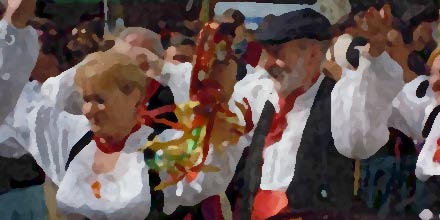Sicilian tarantella: history and curiosities

epanto - CC2.0
The Sicilian tarantella is the dance of Sicily. It is danced with traditional costumes and is linked to the traditions and peculiarities of the territories.
The origins of this dance are very ancient: according to historical sources its birth dates back to the early seventeenth century. According to tradition, that dance originated in the territories of Taranto and then became the emblem of the whole Kingdom of the Two Sicilies, in the nineteenth century.
The name "Tarantella" derives from Taranta, a poisonous spider, widespread in Southern Europe. According to tradition, those who were bitten by Taranta could have different effects, from melancholy to convulsions, agitation and physical pain. Also according to tradition, those who had been bitten by the poisonous spider danced the Tarantella because practicing this dance was used to cause the expulsion of the poison, through sweat and humors. Over time the tarantella has undergone several changes and has been transformed into a couple or collective dance that is danced on different festive occasions .
There are different styles of Sicilian tarantella typical not only of the territory but of a particular period of the year or event, such as the harvest, the carnival, the courtship, ...
The Sicilian tarantella is almost always danced in pairs, unlike the Neapolitan and Apulian tarantellas. The instruments used are the accordion and the Sicilian tambourine, and it is characterized by a progressive increase in the intensity of the rhythm.
The main Sicilian tarantellas are: "Ballu a chiovu, danced by the peasants during the harvest period; " U roggiu "tarantella typical of the harvest period; "Fasola della Tubiana" and "Contradanza", tarantella linked to the Carnival period; "U nozzu", performed by men to court their women; "Lanzet", a dance that dates back to the early nineteenth century and is widespread in the Tortorici area; "Jolla", dance of the shepherds and pecorari.